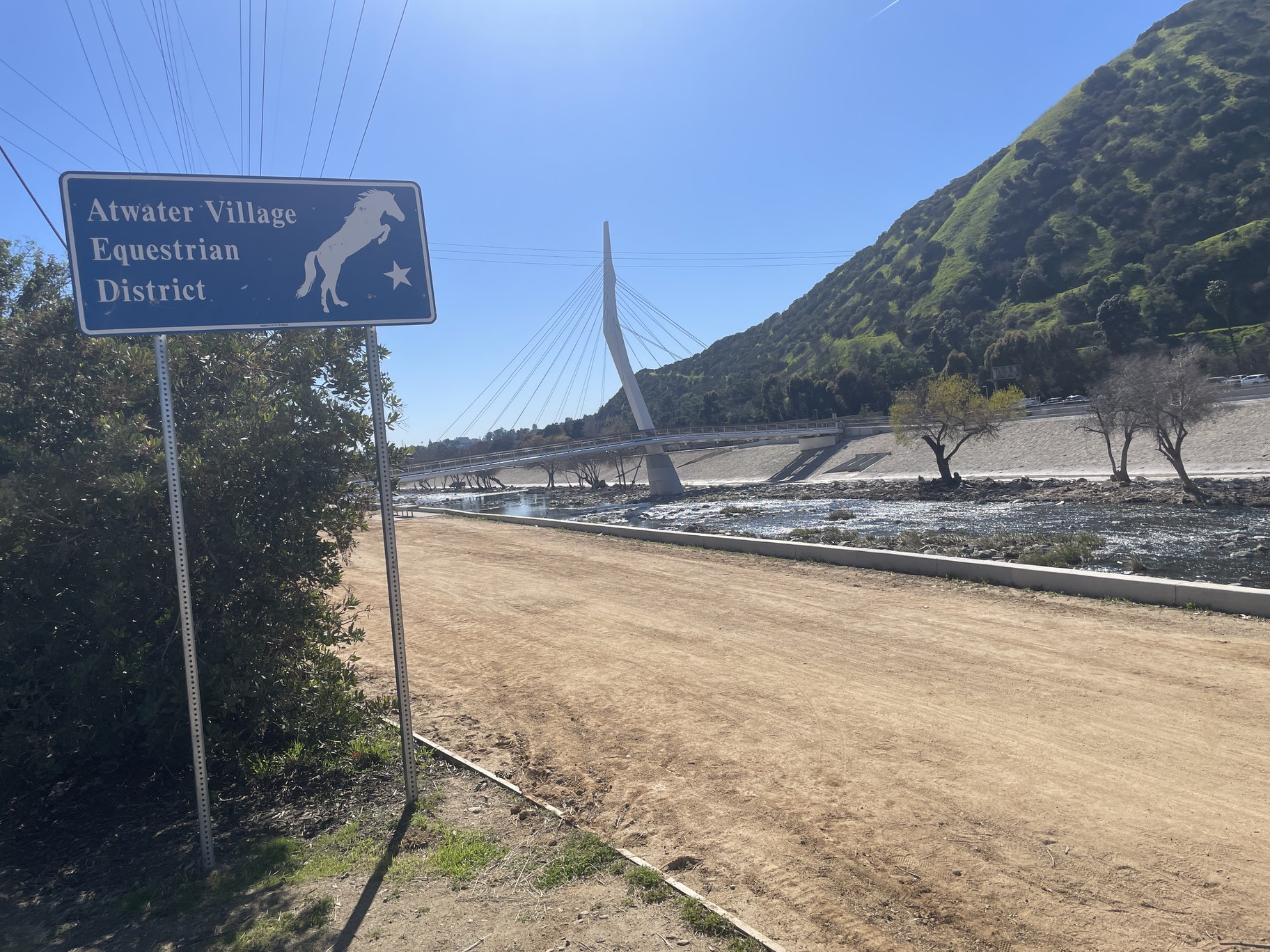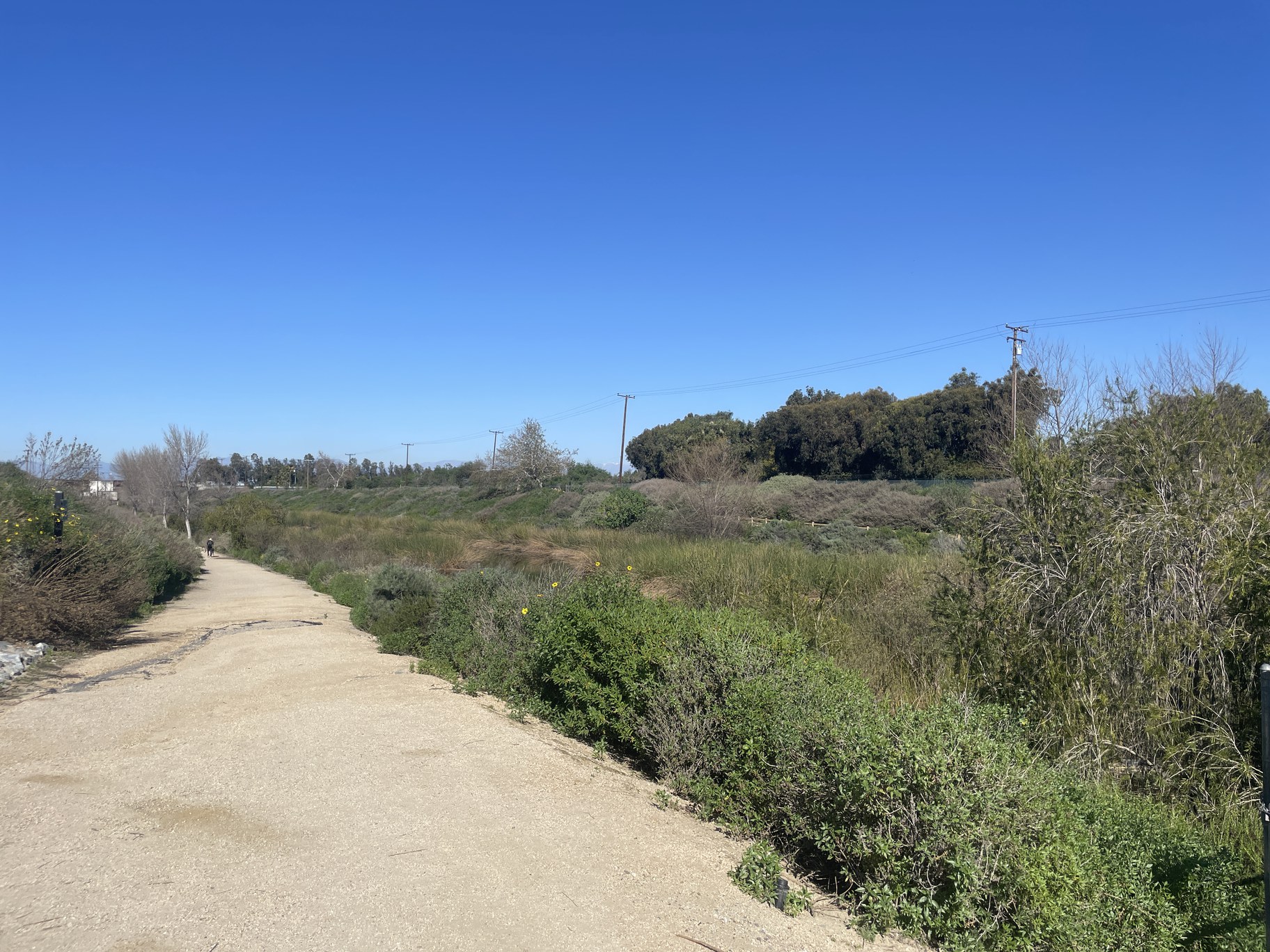The deluge of rain over the weekend flooded streets and damaged infrastructure across California. One place that didn’t flood? The Los Angeles River.
That, of course, is by design. It’s exactly why local officials starting excavating the river and lining it with concrete 85 years ago, and ever since, most of the LA River’s 51 miles from the Santa Susana Mountains to the San Pedro Bay have served primarily as a flood management system.
But a changing climate and changing ideas about how Angelenos want to live with nature are now sparking a debate about LA’s relationship with its straight-jacketed river. Is it too late for a better way?
The rewilding argument
A nonprofit called The River Project says no, and is advocating for restoring the original river ecosystem Angelenos enjoyed 100 years ago.
The River Project’s founder, Melanie Winter, dreams of the LA River as a natural, uninterrupted public space void of steep, concrete walls. She’s referred to one such section as LA’s version of Central Park.
A version of that dream actually already exists at the Sepulveda Basin in Encino. There, the river is a naturally babbling brook weaving around rocks and between trees.
“It has become the place that I bring people to talk about the river,” Winter says. “We're sitting in the middle of a 2,000-acre, undeveloped, federally-owned piece of property that's designed to flood.”
It smells like mud and wet plants, and during a 50-foot walk from a nearby grassy lawn to the river bank, the temperature plummets 10 degrees.
“If you allow the water to slow down, you're going to get healthier soils, you're going to get groundwater recharge, you're going to get richer habitats, you're going to get reduced fire risk, and because you're allowing the river more space within this vast open space, you're going to get more flood detention capacity,” says Winter.
LA County officials say community members have told them they want a more natural, open river with trails and trees. The River Project submitted a proposal that reimagined the river in the Sepulveda Basin and prioritized its historic natural behavior.
A case for concrete
But today, most of the river is still lined with concrete and the current plan is to keep it that way. Changing it would mean a complete overhaul of our decades-old urban environment. After all, the city originally prioritized flood management for a reason.

A “soft-bottom” section of the river in Atwater Village still has concrete on both sides. Osmena says this area has a high flood risk. Photo by Caleigh Wells.
When it rains, rivers flood. The extra room the river needs to do that is called a floodplain, and the LA River’s concrete channel has allowed thousands of people to build their homes safely in that floodplain.
The river “needs to flow to provide these adjacent communities with the protection that they need, so that they're not worried about floodwaters damaging their property, their infrastructure, or their houses, and then also their lives,” says Genevieve Osmena, a senior civil engineer with LA County’s Department of Public Works. “The river would have to be widened anywhere from three to seven times to provide that more natural river I think that folks might be really wanting,” she says.
“The urban community that we have, was allowed to thrive and sprawl up through the last century because of the flood protection that was provided.”
So now we’re stuck. Returning to a natural river would mean relocating miles of neighborhoods along the river’s course. “It would be called displacement,” Osmena says. “It's a sacrifice that I'm not sure all communities or all neighborhoods would be willing to accept or volunteer for.”
Changing climate, changing needs
Winter says she’s heard that argument before, but it’s a conversation worth having as the climate crisis worsens storms and flooding.
“These communities that you say would be displaced by floodplain reclamation will be displaced in a much more violent way if we don't do something,” she says. “These engineering marvels have a shelf life. And sometimes they create more problems than they solve. … The entire system is not built for what we're facing.”
Scientists have run the numbers, and in a 1000-year atmospheric river flood, cleverly named an ARk storm, the LA River could overflow, forcing thousands of people living in its natural floodplain to evacuate and face devastating damages. Osmena says as the climate crisis makes extreme weather more common, the county is aiming to design the river to withstand a 100-year storm.
Winter calls that inadequate. “We're looking for more open space in communities that lack them. We're looking to secure local water supply,” she says. “There's never been a better opportunity to show how important the river is to a climate-resilient Los Angeles.”
So stakeholders are faced with this question: do you make the best river for the planet’s health, or the best river for the safety of the people living near it?
“There's something in the middle.”
Candice Dickens is the CEO of Friends of the LA River and lives in Downey, right on the river, in the floodplain. She sees room for compromise.
“We don’t believe that nature-based solutions and safety are mutually exclusive,” she says. “And it's tough to go to the table with the city and be like, ‘So when are we going to get these folks to move?’ That's a little tough to do.”
As an alternative, Osmena points to an area in Long Beach about a dozen miles before the river meets the ocean. An old water quality detention pond sits next to the concrete channel where the LA River flows in damp times. In the late 90s, LA County officials engineered this area into a wetland. If a big storm hits that risks flooding, the water can go back to the concrete channel.

A dirt path for hikers, cyclists and horseback riders loops around a wetland park that LA County officials developed in the late 1990s. Photo by Caleigh Wells.
But most days, the water flow is low enough that officials can divert it through the wetland.
“We have it meander through these channels that go back and forth with carefully selected plants and vegetation that will clean the water and improve the water quality, as well as foster habitat and ecosystem. It attracted I think, a lot more biodiverse range of animals, birds. I think people come here to watch birds,” Osmena says.
Having access to the land to do this kind of thing is rare, but in Cypress Park and Glassell Park, and where the Rio Hondo meets the river on the edges of Downey, South Gate and Lynwood, LA County has already found a few other chunks of the river to try out bringing nature to the parts of town that need it most.
